 🔹 Importance of Watertightness Inspection
🔹 Importance of Watertightness Inspection
The watertightness of cargo holds is a crucial factor that directly affects the safety and preservation of cargo during sea transportation.
Even a small, undetected gap can allow seawater or rainwater to penetrate into the hold, causing moisture, corrosion, or cargo damage — particularly with dry or moisture-sensitive cargoes such as steel, cement, machinery, or agricultural products.
Such leakage not only results in material loss but also leads to claims, operational delays, and insurance disputes.
🔹 Ultrasonic Testing – The International Standard Solution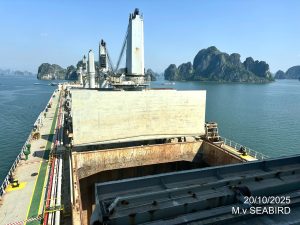
Replacing traditional hose tests that are time-consuming, messy, and less accurate, the Ultrasonic Tightness Test has become the international standard (IMO, IACS) for assessing the watertight integrity of cargo holds.
This modern method provides fast, accurate, and non-destructive detection of even the smallest leaks, without affecting the vessel’s structure or coating.
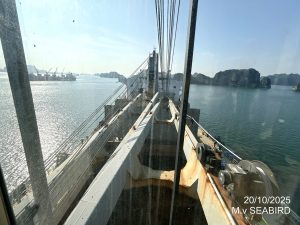 🎯 Objectives of Ultrasonic Tightness Inspection
🎯 Objectives of Ultrasonic Tightness Inspection
- Evaluate the weather and watertight condition of hatch covers, coamings, rubber packings, hinges, locking systems, and compression bars.
- Identify and locate leak points with precision.
- Provide a technical basis for shipowners, charterers, or underwriters to assess cargo readiness.
- Minimize cargo loss, claims, and operational disruption caused by water ingress.
🧪 Ultrasonic Testing Procedure
1️⃣ Preparation:
The vessel should be safely moored with cargo holds cleaned and free from excessive noise.
Specialized ultrasonic equipment such as SDT, Cygnus Hatch Sure, or Ultraseal is used for accurate measurements.
2️⃣ Transmitter Placement:
An ultrasonic transmitter is placed inside the sealed cargo hold, emitting sound waves that spread evenly in all directions.
3️⃣ External Scanning: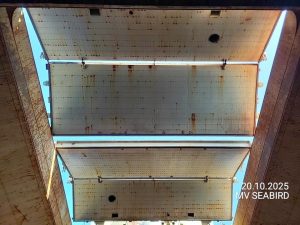
Surveyors use a receiver to scan around hatch coamings, joints, and locking areas from outside.
The receiver measures the sound intensity in decibels (dB) to locate any potential leaks or weak points.
4️⃣ Evaluation and Certification:
Leakage points are marked, photographed, and recorded.
Results are classified according to international standards: PASS / FAIL.
A formal Ultrasonic Test Certificate is then issued, serving as a legally recognized technical document.
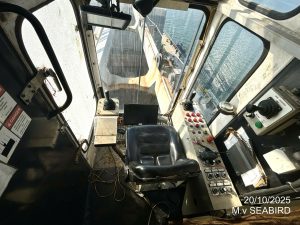
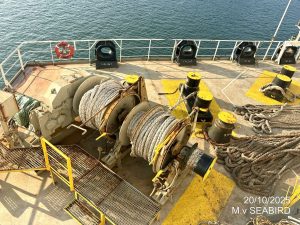

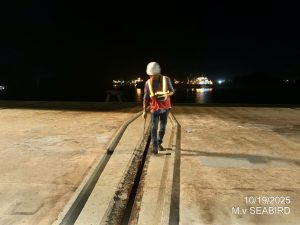 ✅ Why Choose VM CONTROL
✅ Why Choose VM CONTROL
- Highly trained and experienced surveyors, certified and specialized in ultrasonic inspection techniques.
- Advanced and regularly calibrated equipment ensuring high accuracy and reliability.
- Quick, clean, and non-destructive operations, causing no damage to the vessel’s structure or paint.
- Bilingual Vietnamese English inspection certificates, recognized by shipowners, charterers, and P&I Clubs.
CONTACT INFORMATION
VIET MARINE CONTROL JOINT STOCK COMPANY (VM CONTROL)
📍 Address: 1831/10/9, Huynh Tan Phat Street, Quarter 2, Nha Be Commune, Ho Chi Minh City, Vietnam
📞 Hotline: +84 981 600 440 / +84 918 114 742
🌐 Website: www.vietmarinecontrol.com.vn
📧 Email: info@vietmarinecontrol.com.vn
